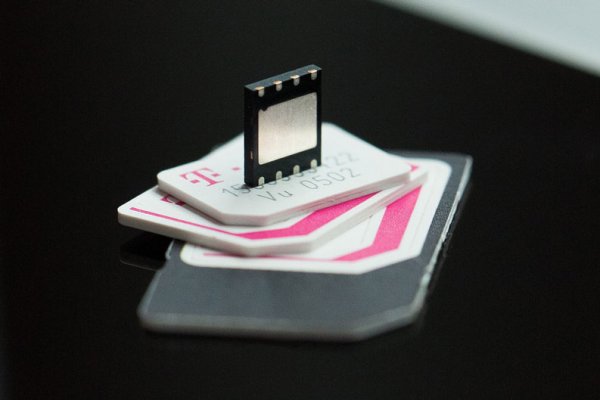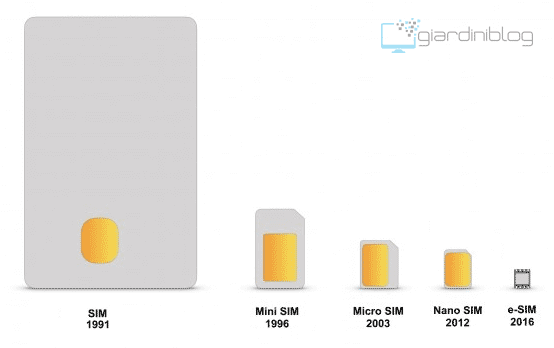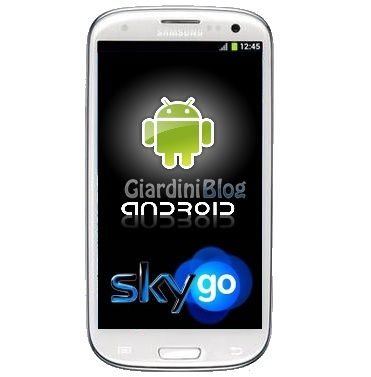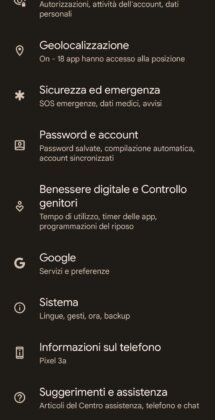en next generation devices (especially smartphones, tablets, smart watches and any other electronic device with connectivity to the cellular network), a new technology is beginning to spread: eSIM also called SoftSIM, evolution of the well-known telephone SIM that we all have in our smartphone.
The introduction of this technology is important in several aspects. For all smartphone and other electronic device manufacturers, make the most of the space Within these devices it is essential to insert, for example, a larger battery (to improve autonomy) or new components of any type to implement new functions.
A classic example of recent years is the tendency to produce private smartphone audio jack 3,5 mm for headphones, a feature that allows you to reserve larger space to other components. The eSIM is another innovation that goes in this direction, but with a slightly different approach than what has been seen in recent decades, where we have gone from Yes (the size of a credit card, so to speak, the one we introduced in mobile phones in the 90s), to the mini SIM, to the micro SIM and later to the current nano SIM.

This innovation will also bring advantages in terms of security and will allow users who wish to quickly change telephone operators (Vodafone, TIM, Tre, Wind, Iliad) to no longer have to wait as long as they normally do. SIM card marketed so far. The classics of about 3/5 days will be reduced to an almost immediate change that will take a few minutes.
In this article we will see What is the eSIM?, What are the differences with normal SIMs, the operators that support eSIMs in Spain and which are the first devices that support this new technology.
What is an eSIM and differences with SIMs
La eSIM it's just a Small chip integrated directly inside our device. (smartphones above all), with very small dimensions compared to the phone SIMs that are currently on the market, as you can see in the image below.

The letter “e” in eSIM means “integrated“, or translated into Spanish”Incorporated“, precisely because this electronic chip is soldered to the “motherboard” of the smartphone or device in which this technology is present.
eSIMs are also equipped with ICCID (IC card ID, the serial code of the old SIM card), like SIM cards in today's phones. Additionally, eSIMs are officially recognized as a standard by the GSM Alliance.
Advantages of eSIM
The eSIM is capable of offering the same functionality as a classic SIM, or to identify in a way único the customer his personal telephone number and give him the ability to make calls, send SMS and MMS and browse through the operator's specific cellular network. This chip is not removable like classic telephone SIM cards, but can be written and managed very easily through the software integrated into the smartphone, with a few simple clicks.
This represents a benefit in terms of fullfilment of security requirements, such as in case of loss or theft of a device (not being able to change SIM as happens today since the eSIM chip is soldered), it will always be possible to track the device by your telephone operator, thus allowing its location. This happens because, every time the device is turned on, the eSIM will try to connect to a cell phone with the data of the owner and the respective operator.
en change operatorAn additional advantage will be the migration times from one operator to another, which will be minutes and not days, all without the need to physically remove or replace anything on our device, but it will be enough to carry out a Sign In with the access data provided by the operator for our eSIM, and it will be recognized immediately, connecting your device to your telephone operator's network.
eSIMs were born mainly with the objective of reducing the space in the devices in which they are mounted, to dedicate it to other components, thus improving the device. An excellent example is small devices such as wearables (smart watches, smart bracelets, smart glasses, etc.), as well as smartphones and tablets, where in a few years it will become the future standard, replacing old phone SIMs.
eSIMs will also allow you to have a profile in the future multisim, all enclosed in a single chip, overcoming the limitations of current single SIM or dual SIM smartphones.
How to change operator with eSIM
If we want change of operator with eSIMHow should we behave? In this case, it will be enough to notify the telephone company with which we want to change, the ICCID code of the eSIM: At the end of the step we will be provided with the new credentials to use in the eSIM to connect with the new operator. No SIM change problems, no bureaucratic delays, no slowdowns: you can finally change operators in a few minutes (and not days as happens now).
Many devices with eSIM will be sold in combination with an offer from the operator, which will pre-configure the eSIM to work with their network: many devices could be sold as "Locked", but in reality this risk is quite remote (at most operators could prevent the change during the promotional period or until the end of the contractual obligation).
eSIM in Spain, compatible devices and networks
TIM and Vodafone are currently the only two Spanish operators that are developing this technology in our country, however, despite this, we are behind other nations, to the point that many devices equipped with eSIM, such as the new iPhone Xr, Xs and Xs Max, will not initially be compatible in Spain. with any national operator.
However, a very rare and unique exception is that of the Apple Watch Series 4, which thanks to Vodafone and the Vodafone OneNumber service via eSIM, will allow you to have the same number on smart watches and smartphones, with support for LTE networks. Tim also supported the Samsung Gear S2016 eSIM in 2, without further development.
Other devices equipped with eSIM are Google Pixel 2 and 3, both in normal and XL investment, in addition to also having the classic nanoSIM slot, the iPad Pro, Air 2, Mini 3 and Surface Pro LTE from Microsoft.
We just have to wait for better integration of the eSIM service in Spain and the integration of the chip in an increasing number of devices, so that we can finally say goodbye to expensive SIM cards.
eSIM how it works, advantages and differences with normal SIMs





